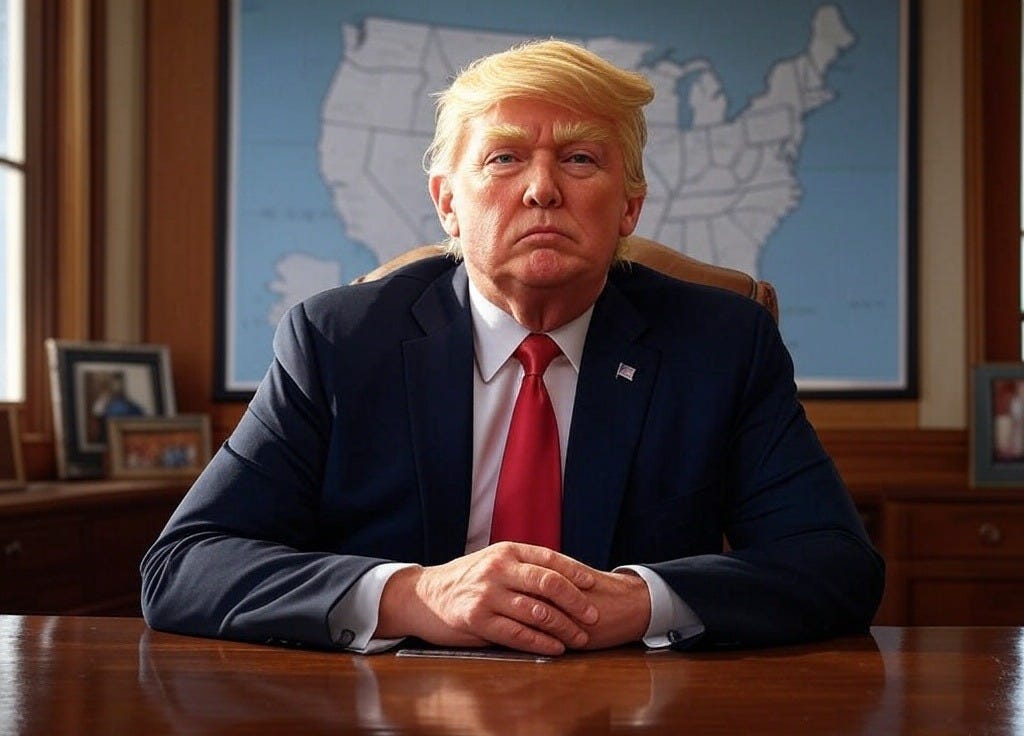Trump's Tariff-Based Order Reshapes Global Trade
US President Donald Trump has released a chart of reciprocal tariffs targeting numerous countries.
US President Donald Trump has released a chart of reciprocal tariffs targeting numerous countries. The chart of reciprocal tariffs published by the White House reveals a significant shift in global trade dynamics. Trump’s Tariff-based Order means a baseline tariff of 10% on imports from all countries, with many facing higher tariffs based on what the US claims they charge the US in tariffs and other trade barriers.
The reciprocal tariffs signed and announced by President Trump on April 2, 2025, are designed to address perceived trade imbalances and protect American interests. By imposing higher tariffs on countries that the US claims have significant trade barriers. But make no mistake about it, American businesses importing goods from these countries will bear the cost of these tariffs, which economists expect to be passed on to American consumers resulting in higher costs for a wide range of products.
Doing The Math
Many economic observers noticed the “reciprocal” tariffs aren’t based on actual foreign tariffs but on the formula of US trade deficit divided by imports. The New York Times reported that “Each country’s new tariff rate appeared to be derived by: Taking the trade deficit that America runs with that nation and dividing it by the exports that country sent into the United States.” The Trump administration reportedly calculated new tariffs based on existing trade balances, dividing a country's trade surplus with the US by its total exports and then dividing by two. The United States Trade Representative (USTR) detailed a formula that divides a country’s trade surplus with the US by its total exports, based on data from the US Census Bureau for 2024.
The tariffs include a baseline rate of 10% on all imports, with higher rates for specific countries. For example, China will face a 34% tariff, the European Union 20%, and India 26%. The Trump administration maintains that the tariffs will boost domestic manufacturing and reduce the US trade deficit while leaving the door open to dozens of additional individualized reciprocal higher tariffs, against nations with which the US has large trade deficits with, which will take effect on April 9. The tariffs also function as a way to open negotiations with countries as Scott Bessent recently said in an interview, “[...] the nature of reciprocal tariffs is that we are if we start matching whether it's the EU that any other country in the world with reciprocal tariffs we're just doing what they're doing and then adding in these other factors if they remediate those which is past dependent on their reaction function if they do that then they're tariffs could drop if they want to be recalcitrant if they want to continue these unfair trade practices then the tariff wall will go up until they are willing to negotiate.”
Tariffs On BRICS Core
The Trump administration has implemented a set of reciprocal tariffs targeting several key countries, to address perceived trade imbalances and protect American interests. According to the published tariff rates, Brazil, Egypt, Ethiopia, and the UAE all face a 10% tariff on imports to the US. With India, South Africa and China being specially hit with India facing a 26% tariff, China facing a 34% tariff along with South Africa facing a 30% reciprocal tariff from the US. While there were notable absences such as Russia and Iran that are not present on the list. The strong-armed policy has profound implications for supply chains, prompting States and companies to consider diversifying their operations to regions less impacted by tariffs, such as the Western Hemisphere or purportedly go all in into the BRICSsphere countries.
The US Tariff-based order set up by the Trump administration indicates that Latin America was largely spared in contrast to Asian manufacturing which has been heavily impacted by the new reciprocal tariffs. Countries like China, Vietnam, South Korea and even Japan which are major manufacturing hubs, are now facing significant increases in tariff rates. Recently, in March 2025, trade ministers from China, Japan, and South Korea met in Seoul for a first trilateral meeting where they agreed to accelerate negotiations for a free trade agreement (FTA) between the three countries as they strengthen their economic cooperation in the face of new tariffs imposed by the US.
The reciprocal tariffs imposed by the Trump administration, along with other geopolitical moves such as Greenland's potential annexation and BlackRock’s Attempts to buy CK Hutchison owned Ports including those in Panama indicate a strategic effort by the US to carve out a sphere of influence to protect US interests, enforce its Rules-Based Order, and ensure that global trade dynamics align with US priorities would lead to an overall more fragmented global trade landscape, with the US at the center of a network of aligned countries and supply chains.
Since the end of World War II, the United States has strategically managed trade deficits with certain countries for geopolitical reasons, often as part of a broader neocolonial hierarchy aimed at courting and rewarding nations that align with the West's geoeconomic architecture. For instance, the US maintained trade deficits with countries in Western Europe and Asia to foster economic cooperation and political alignment. In their time these deficits were seen as a necessary investment to ensure stability and promote democratic governance in regions critical to the global balance of power. As they extended trade benefits and economic nourishment, the US created a system where countries were incentivized to support US-led initiatives and adhere to the rules-based international order. However, over time, the sustainability of these trade deficits has become a point of concern, as the US faces growing challenges and shifts in the global economic landscape. The global economy becoming more multipolar as emerging markets and developing countries played a larger role as US Vice President JD Vance himself admitted recently.

